In 2003, Kamikatsu, Japan made a bold goal– to become a zero-waste municipality by 2020. As the first Japanese town to have the goal of entirely eliminating waste from within its borders, it moved into a very bright spotlight. Since setting that goal, the 1500 residents have been cleaning, sorting, and dreaming up a myriad of creative ways of turning waste not only into reusable raw material, but also into beautiful new creations that have become a source of income. With all of these efforts (including a recently opened hotel that models these principles), Kamikatsu has become a learning center for people from around the world who come to this small town in order to see firsthand its methods of reducing, reusing, and recycling waste.
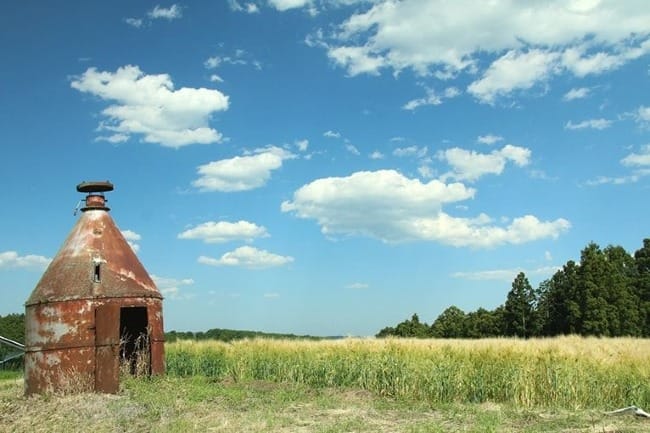
The Beginning of the Journey
The journey wasn't one the residents began eagerly. Until the late 1990s, this scattered mountain population got rid of their waste primarily by burning it out in the open or dumping it into landfills. In 1998, the town used two central incinerators to burn the community's waste, but new national regulations created to limit dioxin pollution determined that the town's incinerators would need to be shut down due to pollution concerns. To cut down on food waste, the town had, a couple of years earlier, begun providing subsidies for electric composters so that households could return their own organic waste to their own land, getting rid of food waste and benefitting the soil many of them farmed on. But there was still the issue of non-organic waste to deal with.
The small, aging populations didn't have the finances to purchase cleaner incinerators or transport their waste to a community that owned one, so they turned to a viable, but demanding option—finding ways to drastically decrease waste and increase recycling. They formed the goal of becoming zero-waste by 2020. The ways they have set about to accomplish this goal involve many creative ways of turning waste into assets.
In 2003, Kamikatsu created the Zero Waste Academy and later constructed The Zero Waste Center, which is a set of buildings and businesses that clean, sort, reuse, recycle, and rethink what is done with waste. It is the center of Kamikatsu's effort to reuse or recycle everything it produces.
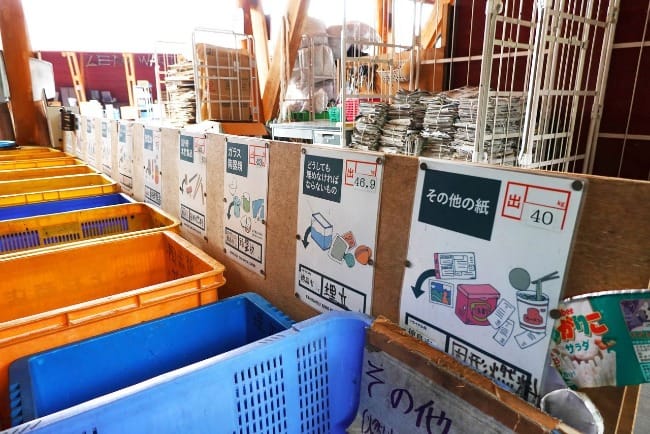
Parts of the Sum
Each resident is responsible for cleaning the things they use, bringing them to the facility, and sorting them into the 45 different types of waste. When separated into parts, what was once just trash becomes raw material that holds value and can be reused. For instance, a broken lamp would be stripped and separated into its parts—glass, metal, wire, and whatever else it is composed of—and would be separated into bins. The efforts of the townspeople to carefully clean and sort their waste enables the town to generate income from the raw materials produced from the waste. The town government has a philosophy of “sorted, it’s valuable—unsorted, it’s just waste."
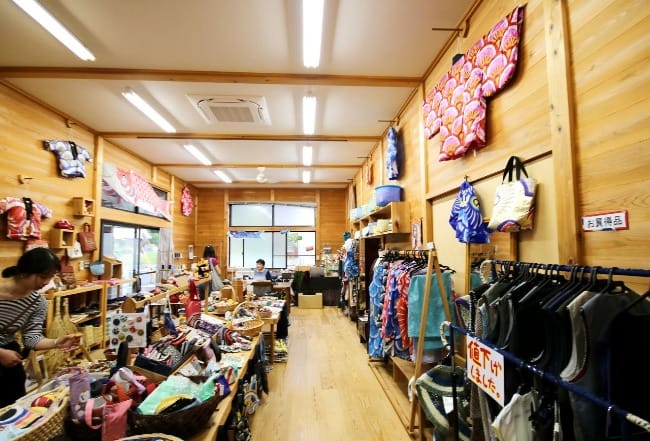
Many of these materials are used to create something new—such as purses and other things made from used kimono fabric.
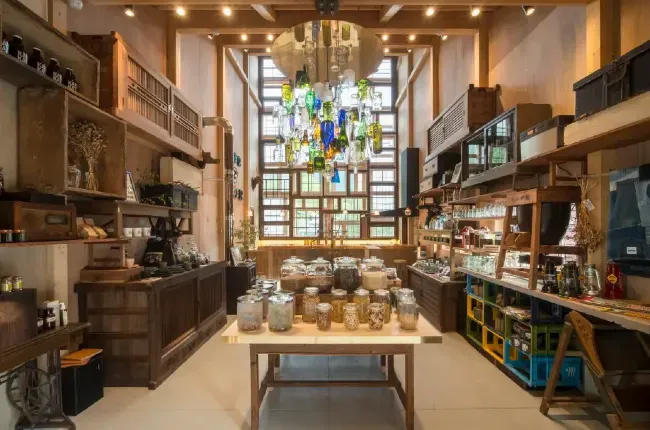
Kuru kuru (circular) stores enable people to give away what they are done with and pick up (for free) what someone else no longer needs. Those taking items record the weight of the items (a monthly average of 550 kg or over half a ton) and this is publicized in order to bring attention to the difference in waste accumulation these efforts are making.
Showing How Its Done
Being personally responsible for any waste one produces generates a thoughtfulness about acquiring things, including the packaging it comes in. It is complex packaging that has proven to be the hardest piece of the puzzle to fix for Kamikatsu. They have been able to increase their recycling to 81% of their waste but weren't able to reach their goal of 100% by 2020. Primarily, this is due to a few types of packaging that are hard to deal with and due to companies which refuse to change their packaging. Avoiding packing that is difficult or impossible to recycle is integral to the goal of eliminating waste. There will likely need to be some structural change if Kamikatsu is to reach their zero-waste goal, but even so, their accomplishment is noteworthy. With 81% of their waste being recycled, they have moved a long way from 2008, when they were recycling 58.6% of their waste products, and are far above the national Japanese average of 20%.
The metropolis has in many ways become a demonstration town—where people can see what it might look like to live in a circular economy, where nothing ends up discarded but instead materials are composted, reused, put to new uses, or avoided in the first place. The Zero Waste Center is the center of this model of zero waste and the businesses there demonstrate what this lifestyle looks like in practice. The windows in the Zero Waste Center are an example of this since all of them were salvaged and donated by people who no longer had use for them. This is true of the rest of the structure as well, and each piece of it has a story and a history behind it.
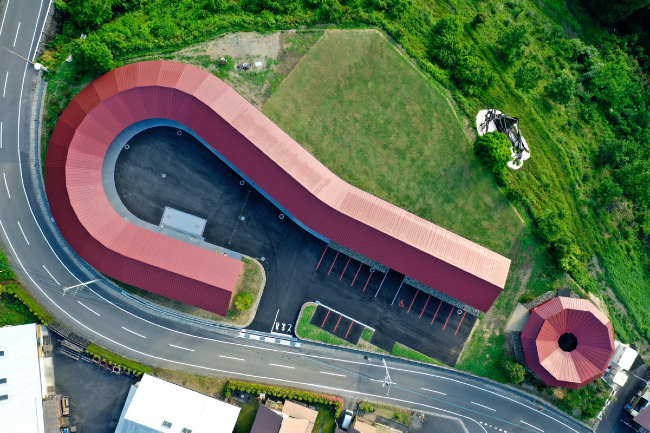
Learning Translatable Practices
From above, the Center is in the shape of a question mark, leaving people with the question of why our way of life produces so much waste. The dot of the question mark is the Hotel Why, a model for zero waste.
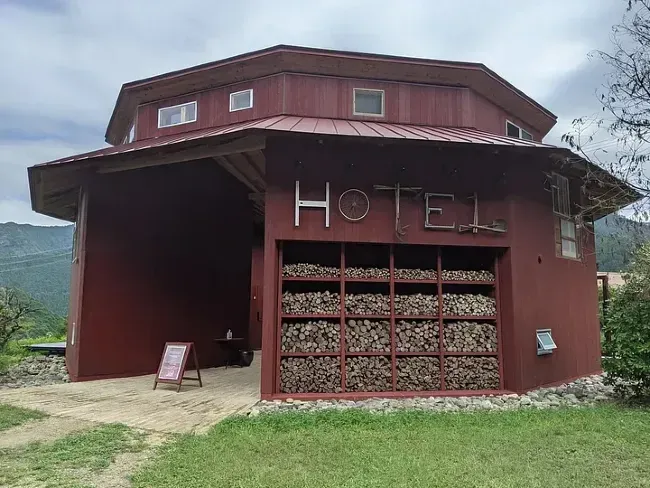
With only four rooms, the hotel functions largely as a place for education about zero waste by providing a living example for people to see what living waste-free looks and feels like. From the moment when people check in, the emphasis is on sustainability and frugality. A striking example of this is that each lodger is invited to cut just the right amount of soap they will need from a large bar of soap. This expectation of taking only what you will use is a strong contrast to cultures where it is assumed that you will take more than you need and just throw away what you don't need. Here, "just the right amount," is a value, and wastefulness is problem to be avoided.
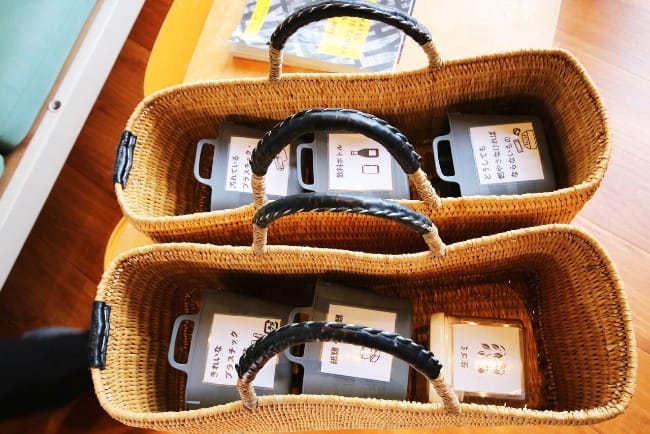
The hotel is outfitted with salvaged furniture, instructions on how to personally sort and take care of any waste you produce (with a basket to help you do so), and lectures on sustainability, aligning it with the ever-present theme and practice of reducing waste that is found city-wide in Kamikatsu. The Hotel Why gives visitors to Kamikatsu a taste of what sustainability is like so that they can translate it into their own places and lives when they return home. The immersive models available throughout the area—restaurants, stores, other businesses—provide those who come to learn plenty of ideas to put into practice in their own households and communities.
Reflection Questions: What ways have you found to minimize the waste you produce? What changes could you make to reduce this even more?
Feel free to leave a comment below or contact me directly at louise.conner@circlewood.online.
Louise

I have already received some pictures for our "Circlewood Photo Ark," but would love more! I invite you to send one (or more) photo of a creature (or creatures) to add to our ark. To do so, take a picture (a close-up if possible) and send it to me at louise.conner@circlewood.online before the end of October. The world is a varied place, and we would love to share some of that variety. (If you send in a photograph, please include your name, the name of the creature if you know it, and your location—thanks!).